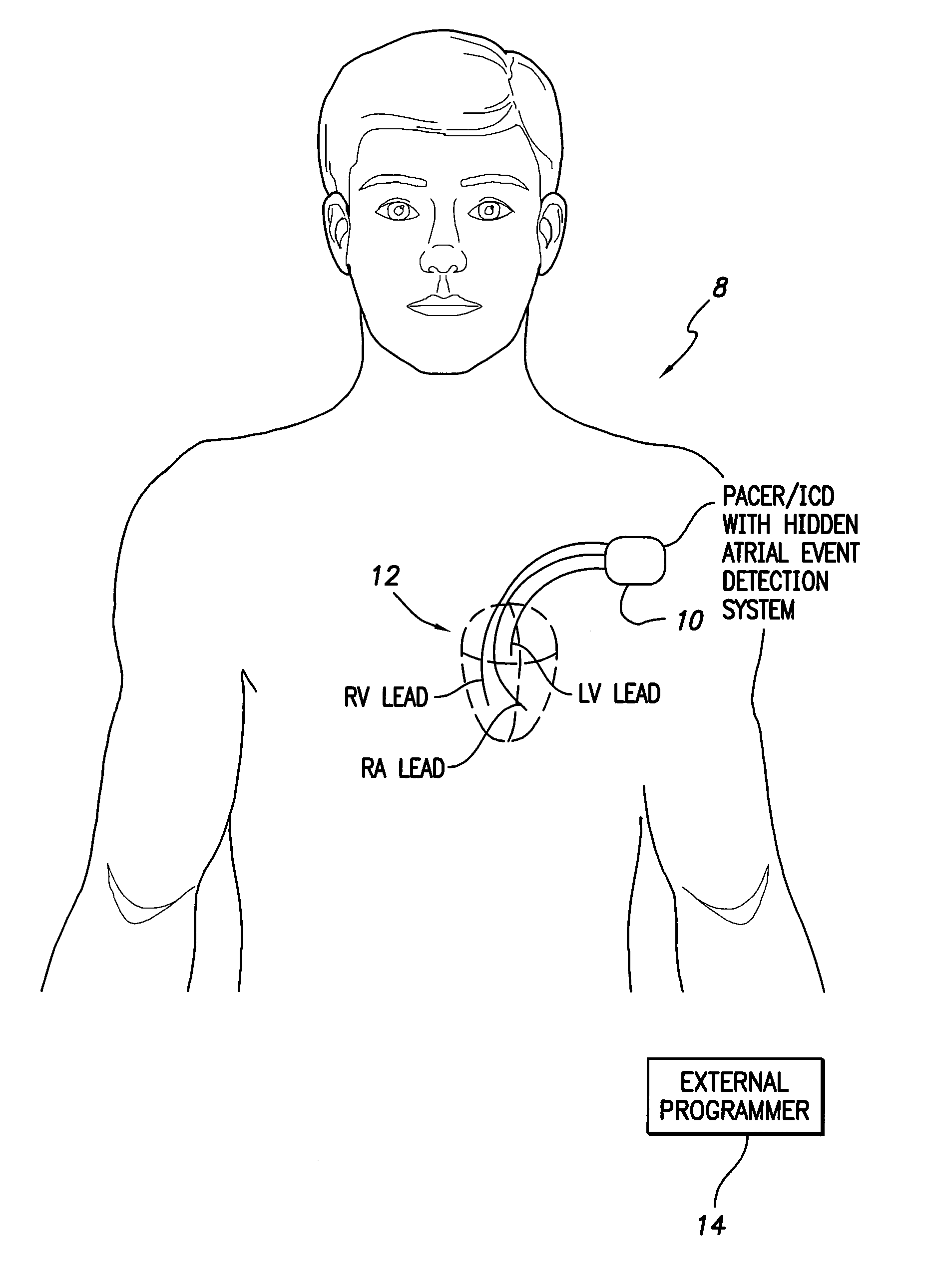System and method for detecting hidden atrial events for use with automatic mode switching within an implantable medical device
a technology of automatic mode switching and atrial event detection, which is applied in the field of implantable cardiac stimulation devices, can solve the problems of increasing patient morbidity, unsatisfactory patients, and significant variations in the calculated atrial rate, and achieves the effect of reducing or eliminating the oscillation of mode switching, quick and accurate determination
- Summary
- Abstract
- Description
- Claims
- Application Information
AI Technical Summary
Benefits of technology
Problems solved by technology
Method used
Image
Examples
Embodiment Construction
[0023]The following description includes the best mode presently contemplated for practicing the invention. This description is not to be taken in a limiting sense but is made merely to describe general principles of the invention. The scope of the invention should be ascertained with reference to the issued claims. In the description of the invention that follows, like numerals or reference designators will be used to refer to like parts or elements throughout.
Overview of Implantable System
[0024]FIG. 2 illustrates an implantable medical system 8 having a pacer / ICD 10 capable of detecting hidden atrial events and arrhythmias within the patient in which the pacer / ICD is implanted, based on electrical cardiac signals sensed during a PVAB interval or other atrial channel blanking interval. To sense electrical cardiac signals, the pacer / ICD uses a set of cardiac pacing / sensing leads 12 implanted on or within the heart of the patient from which one or more IEGM signals is derived. In FIG...
PUM
 Login to View More
Login to View More Abstract
Description
Claims
Application Information
 Login to View More
Login to View More - R&D
- Intellectual Property
- Life Sciences
- Materials
- Tech Scout
- Unparalleled Data Quality
- Higher Quality Content
- 60% Fewer Hallucinations
Browse by: Latest US Patents, China's latest patents, Technical Efficacy Thesaurus, Application Domain, Technology Topic, Popular Technical Reports.
© 2025 PatSnap. All rights reserved.Legal|Privacy policy|Modern Slavery Act Transparency Statement|Sitemap|About US| Contact US: help@patsnap.com



